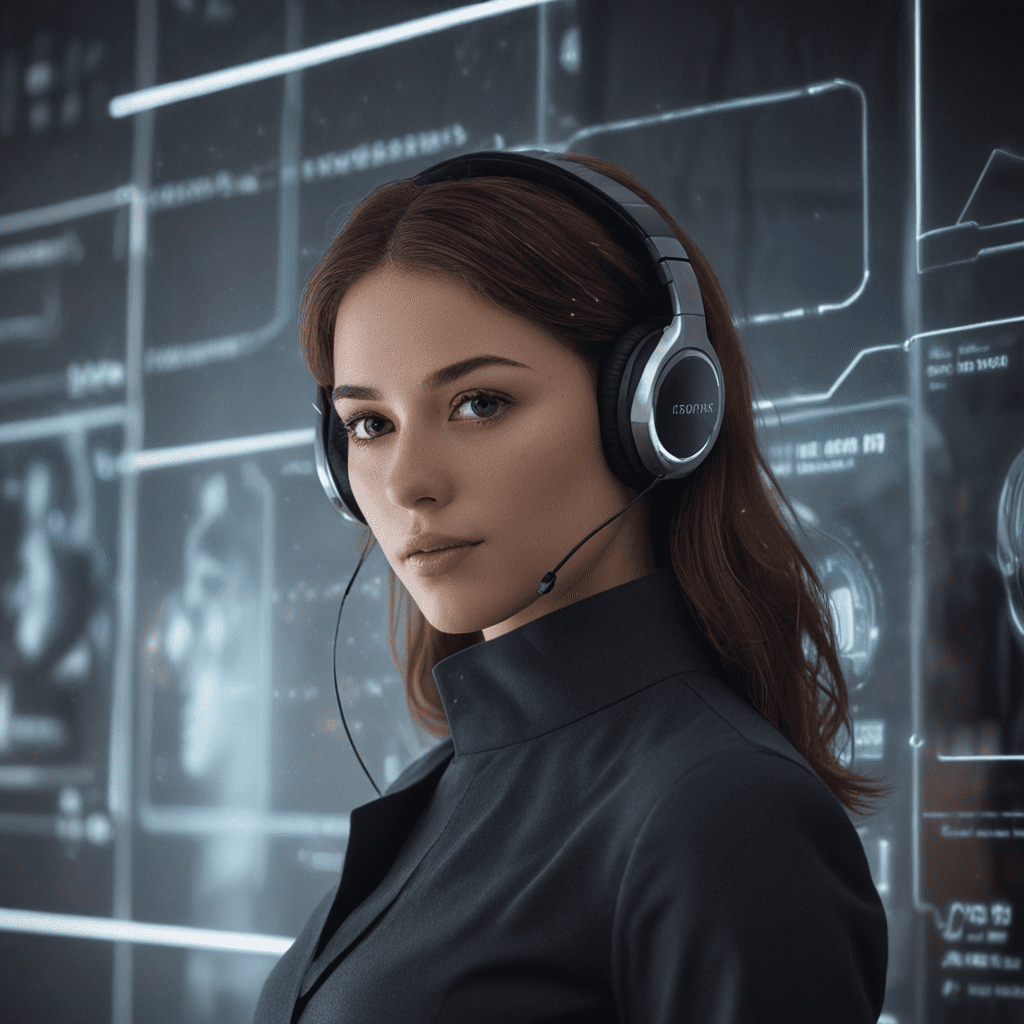
1. Introduction: The Rise of Virtual Assistants
In the ever-evolving landscape of technology, virtual assistants (VAs) have emerged as indispensable tools, revolutionizing the way we interact with digital devices and enhancing our personal experiences. VAs are software agents powered by artificial intelligence (AI) that can perform a wide range of tasks, from scheduling appointments to providing information and controlling smart home devices. Their crescente popularity stems from their ability to understand and respond to natural language, making interaction seamless and intuitive.
2. The Evolution of Personalization: From Mass Marketing to Tailored Experiences
Traditionally, businesses relied on mass marketing strategies to reach their target audience. However, with the advent of the digital age, consumers expect more personalized experiences that cater to their unique needs and preferences. VAs play a crucial role in this shift, enabling businesses to deliver customized content and services that resonate with each individual user.
3. How Virtual Assistants Enhance Personalization: Understanding User Needs
VAs are equipped with advanced algorithms that allow them to analyze user data and identify patterns in behavior and preferences. This in-depth understanding of individual users enables VAs to tailor their responses and recommendations accordingly. By leveraging AI and machine learning, VAs can continuously adapt and learn, refining their ability to provide personalized experiences over time.
4. Leveraging AI and Machine Learning: Adaptive and Contextualized Interactions
AI and machine learning are the driving forces behind the personalization capabilities of VAs. These technologies allow VAs to process and interpret large amounts of data, including user history, preferences, and current context. This enables VAs to provide highly contextualized interactions that are relevant to the specific needs of each user in real-time.
5. Building Strong Relationships: Virtual Assistants as Conversational Companions
VAs are designed to be conversational companions, fostering a natural and engaging interaction experience with users. They can engage in back-and-forth conversations, answer questions, and provide assistance in a friendly and personalized manner. This ability to build rapport with users enhances the overall user experience, making VAs more than just tools but rather trusted advisors and assistants.
6. Personalized Content Delivery: Tailored to Individual Preferences
VAs leverage their understanding of user preferences to deliver highly personalized content. They can recommend movies, music, news articles, and other content that aligns with each user's tastes and interests. This tailored content delivery enhances the user experience, making it more enjoyable and engaging.
7. Smart Device Integration: Seamless and Omnipresent Assistance
VAs are seamlessly integrated with smart devices, providing users with a consistent and interconnected experience across multiple platforms. They can control smart home appliances, manage lighting, adjust thermostats, and perform various other tasks, all through voice commands or text-based interactions. This omnipresent assistance streamlines daily routines and enhances convenience.
8. Customization and Empowerment: Empowering Users to Personalize Their Experiences
VAs offer users a high degree of customization, allowing them to tailor their experiences to their specific needs and preferences. They can choose from a range of voice assistants, customize their settings, and even create personalized routines that automate tasks and enhance productivity. This empowerment gives users greater control over their digital interactions and fosters a sense of ownership.
9. Ethical Considerations in Personalized Virtual Assistants: Balancing Privacy and Value
The personalization capabilities of VAs raise ethical considerations regarding privacy and data protection. VAs collect and analyze user data to provide personalized experiences, which requires careful handling and transparent communication with users. Striking a balance between offering personalized value and safeguarding user privacy is crucial for the responsible development and deployment of VAs.
10. The Future of Virtual Assistants: Unlocking New Levels of Personalization
The future of VAs holds immense potential for unlocking new levels of personalization. Advancements in AI and machine learning will enable VAs to become even more sophisticated, with the ability to understand complex user emotions, anticipate needs, and provide proactive assistance. Integration with emerging technologies, such as augmented reality (AR) and virtual reality (VR), will further enhance the user experience, making VAs indispensable companions in our daily lives.
Frequently Asked Questions (FAQs)
Q: What are the benefits of using virtual assistants (VAs)?
A: VAs offer numerous benefits, including personalized experiences, enhanced convenience, hands-free operation, increased productivity, and seamless device integration.
Q: How do VAs learn and adapt to user preferences?
A: VAs utilize advanced AI and machine learning algorithms to analyze user data and identify patterns in behavior and preferences. This enables them to provide tailored recommendations and adapt their responses over time.
Q: Are VAs secure and trustworthy?
A: The security and trustworthiness of VAs depend on the specific platform and service provider. Reputable VA providers implement robust security measures to protect user data and privacy.
Q: What are the ethical considerations surrounding VAs?
A: The collection and analysis of user data by VAs raise ethical concerns regarding privacy. It is crucial for VA providers to be transparent about data usage and to implement measures to protect user privacy.
Q: What is the future of VAs?
A: The future of VAs holds exciting possibilities, with advancements in AI and integration with emerging technologies. VAs are poised to become even more personalized, proactive, and seamlessly integrated into our daily lives.


